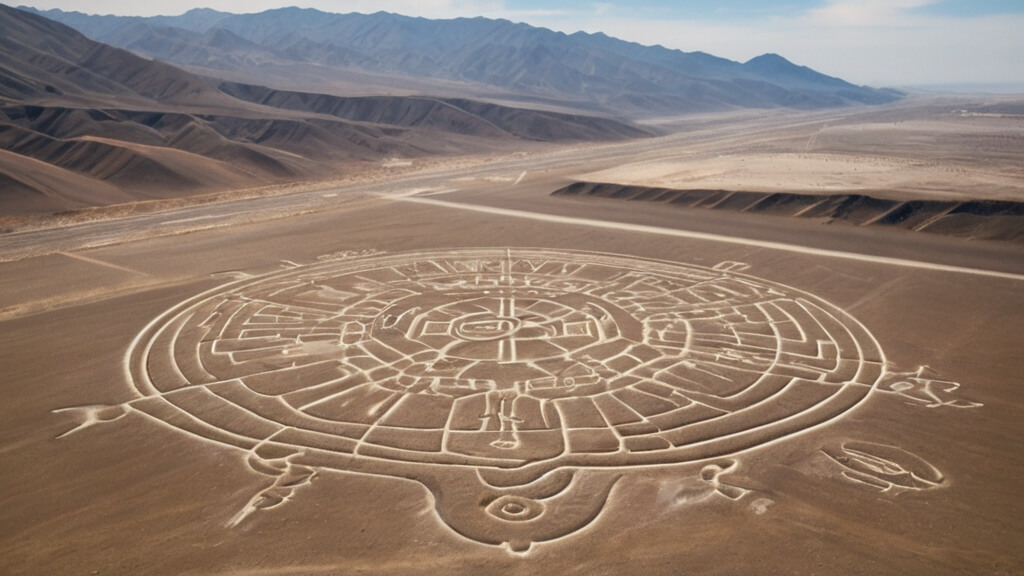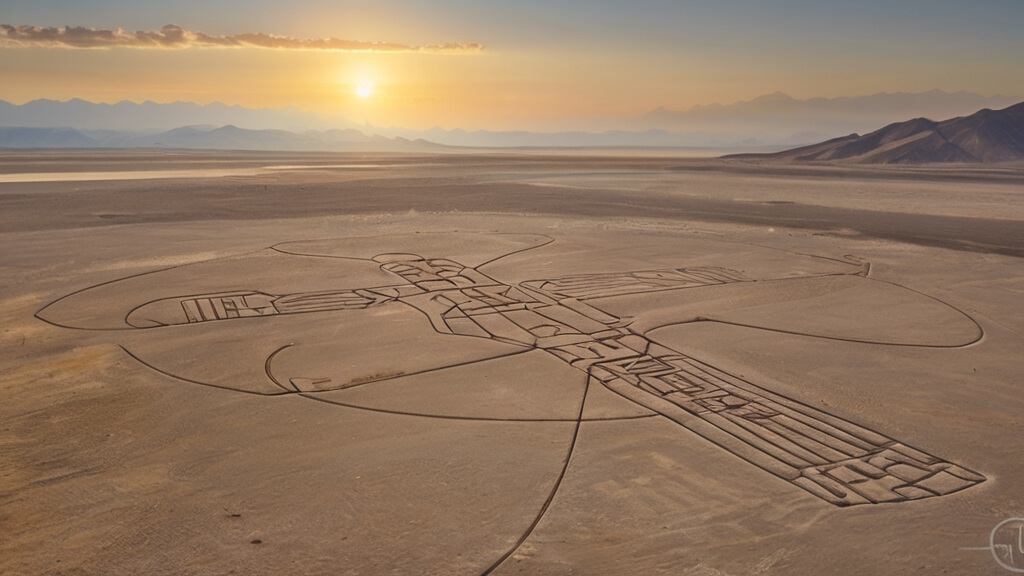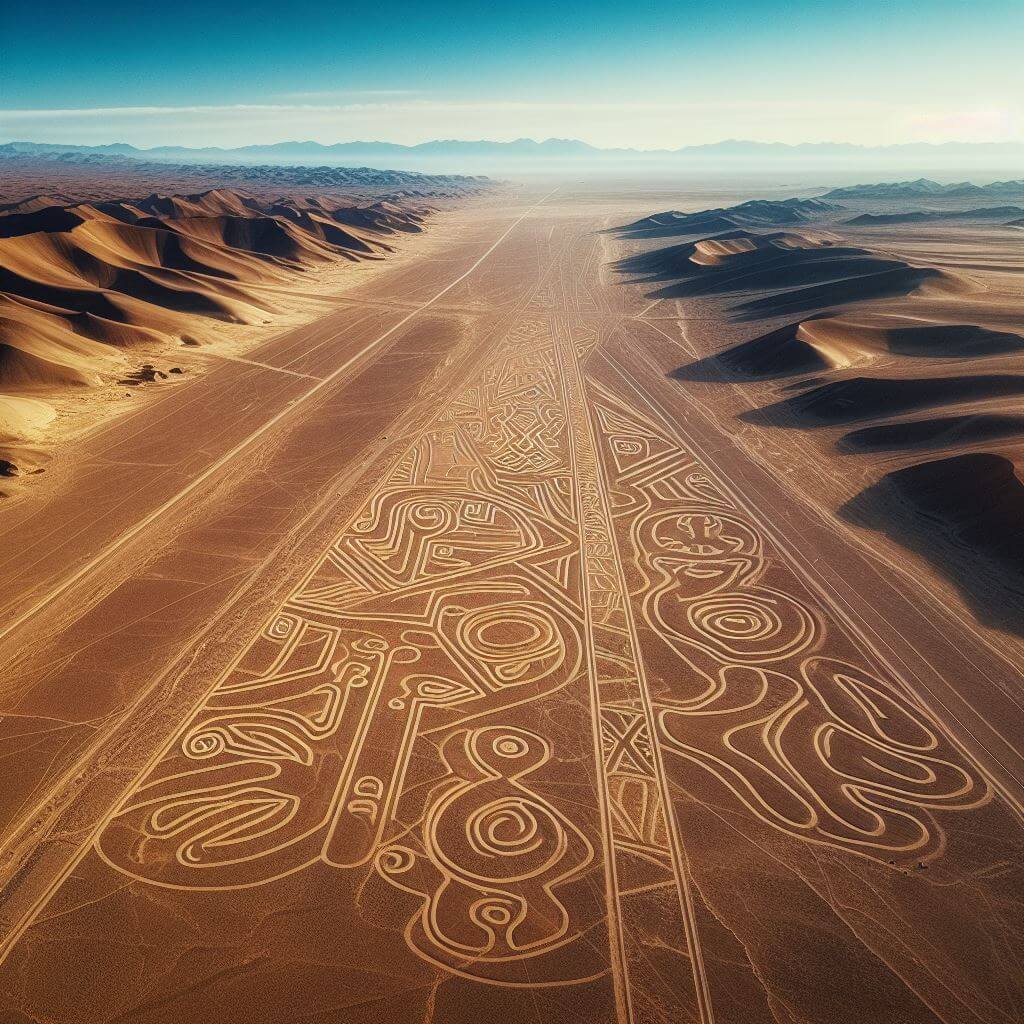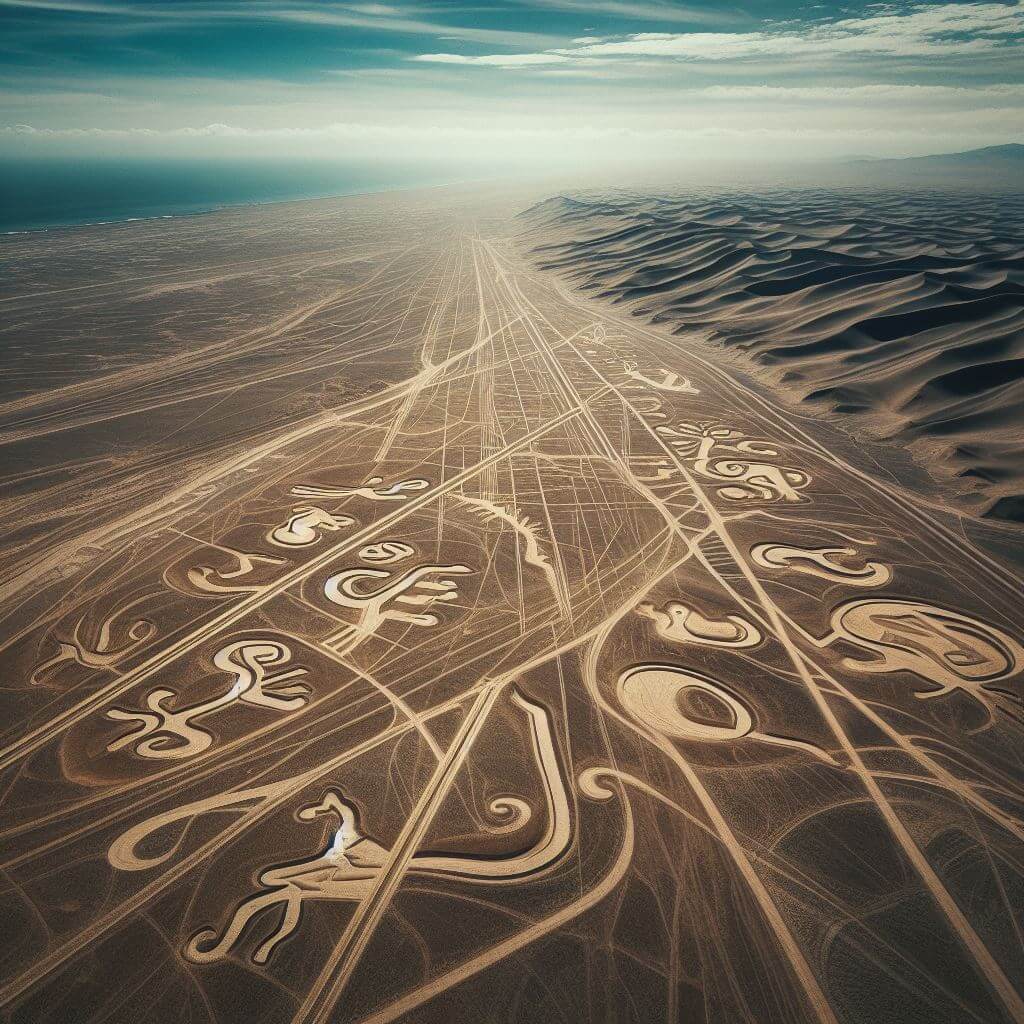Delve into the ancient Nazca Lines’ enigmatic origins, intricate creation process, and enduring cultural significance. Discover how protective terrain and natural elements have preserved these remarkable geoglyphs, alongside fascinating examples of prehistoric figures etched into the Earth’s surface across different regions, from Southern Peru to England’s countryside.

The Nazca Lines: Over 1,500 years ago, the Nazca Indigenous people began creating straight lines, geometric shapes, and more than 70 depictions of plants and animals in the barren plains between the Pacific coast and the foothills of the Andes Mountains in Southern Peru. Among these figures are representations of hummingbirds, dogs, running monkeys, cacti, flowers, trees, and many others.
These lines were first discovered by Peruvian archaeologist Toribio Mejia Xesspe in 1926, but it wasn’t until the 1930s, when commercial aircraft began flying over the region, that the magnificence of the lines became fully apparent from the sky. Distinguishing the lines from ground level is extremely challenging; however, from above, geometric shapes, zigzag lines, and extraordinary animal drawings emerge.
The Nazca people carefully removed the top layer of rocks coated with iron oxide to reveal a lighter-colored sand underneath, shining in the sunlight. Thanks to the hot and dry climate, the lines have largely remained undisturbed since they were created. The purpose of the Nazca Lines remains a mystery. Various strange theories have been proposed, suggesting they depict a giant astronomical calendar, represent constellations of stars in the night sky through the animal figures, and more.
In the 1960s, some researchers even speculated that the zigzag lines served as landing strips for extraterrestrial visitors to Earth, with one drawing resembling an ancient astronaut. Today, it is believed that the animal drawings symbolize fertility and water, possibly drawn to invoke rain from the gods. Such a “rain prayer” ritual may have been developed due to drought. While the true purpose of the Nazca Lines remains unknown, they continue to captivate viewers and were declared a UNESCO World Heritage Site in 1994.

How Were the Nazca Lines Created?
Certain aspects of the creation process of the Nazca Lines have remained shrouded in mystery, despite extensive archaeological study and theorizing. Over the years, researchers have dedicated significant efforts to unraveling the techniques and methodologies employed by the Nazca people in crafting these enigmatic geoglyphs.
The process behind the creation of the Nazca Lines reveals a remarkable level of ingenuity and precision, considering the limited technological resources available to the Nazca civilization. One of the intriguing methods believed to have been utilized involves the use of stakes and ropes, which served as essential tools in ensuring the accuracy and consistency of the lines’ dimensions.
These lines, some stretching across vast distances, were meticulously crafted with the aid of two stakes connected by ropes, effectively acting as guides to maintain a uniform width throughout their lengths. This ingenious approach allowed the Nazca people to achieve straight lines with astonishing precision, despite the challenging terrain and lack of modern surveying equipment.

Moreover, the creation of the Nazca Lines’ intricate spirals showcases the Nazca people’s advanced understanding of geometric principles and their ability to execute complex designs. By tethering a rope between two stakes and driving a third stake into the ground, the Nazca artisans could rotate one of the connected stakes to trace out perfect spirals with remarkable symmetry and accuracy.
The process of rendering the iconic animal geoglyphs, such as the hummingbird, dog, monkey, and others, also involved a series of meticulous steps. Initially, artisans would sketch out these figures on a smaller scale, likely on fabric or other portable mediums. Subsequently, these preliminary designs would be transferred onto the desert floor, where they would be meticulously enlarged while maintaining proportionality, thanks to the strategic placement of stakes and ropes.
In addition to technical considerations, cultural and spiritual beliefs likely played a significant role in the creation of the Nazca Lines. Scholars speculate that these geoglyphs may have served ritualistic or ceremonial purposes, possibly linked to the Nazca people’s agricultural practices, water management, or celestial observations.
Overall, the creation of the Nazca Lines stands as a testament to the ingenuity, artistic prowess, and cultural significance of the ancient Nazca civilization. Despite centuries of speculation and investigation, numerous questions surrounding these iconic markings persist, continuing to intrigue and inspire researchers and visitors alike.
Protective Terrain
We owe the remarkably minimal degradation of the Nazca Lines to their unique geographical location and the natural elements surrounding them. Despite over a millennium passing since their creation, these lines have endured relatively intact. The arid and dusty plains receive only about 20 minutes of rainfall per year, and the gentle, warm winds contribute to a lack of destructive erosion. Additionally, the presence of gypsum in the soil acts as a protective barrier, cooling in the early morning hours and safeguarding the lines from potential threats.

Nazca Lines
Beyond the archaeological figures etched into the Earth’s surface lie other notable examples of prehistoric geoglyphs. Among them, the Uffington White Horse in Oxfordshire, England, stands as a magnificent specimen, measuring 110 meters in length. Carved into the white chalk hillside, the figure of a horse appears to gallop across the green slope. Other examples include the Westbury White Horse and the Tysoe Red Horse, the latter named for the red clay soil from which it is fashioned.
England also boasts examples from the 16th and 17th centuries, such as the Long Man of Wilmington, a 72-meter figure located in the town of Eastbourne, and the Cerne Abbas Giant, a 55-meter figure situated in the rural landscape of Dorset. Both figures were created by excavating trenches into the grassy surface and filling them with chalk fragments, showcasing the ingenuity and artistry of their creators.